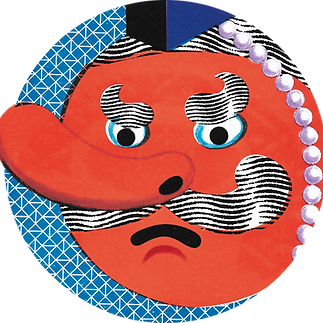About KYOTO–HAN
A new card series created in collaboration between Kyoto’s BENRIDO and the Kyoto-based artist duo tupera tupera. Featuring whimsical illustrations of all kinds of things related to Kyoto, each card is printed using BENRIDO’s exclusive color COLLOTYPE process. Fun to send, use, or display, this charming series is a fresh take on Kyoto souvenirs. The “han” in “Kyoto-han” plays on the Japanese word for “print” (han) and the Kyoto dialect’s polite suffix “-han.”


¥1,320
The Twenty Types KYOTO–HAN


About COLLOTYPE
“KYOTO-HAN” is produced using COLLOTYPE, a printmaking technique invented in France 170 years ago and renowned for its rich textures and delicate tonal expressions. BENRIDO is the only company in the world that has preserved and continues to produce color collotype prints. Experience the unique depth, vibrancy, and timeless beauty that COLLOTYPE can offer.


tupera tupera
tupera tupera is an artist duo made up of Tatsuya Kameyama and Atsuko Nakagawa. Their creative work spans a wide range of fields, including picture books, illustrations, television, stage, and spatial art direction. They have published many beloved picture books, such as Kao Nōto (Face Notebook), Shirokuma no Pantsu (Polar Bear’s Underwear) and Panda Sentō (Panda Bathhouse), with translations available in several languages.

The Twenty Types KYOTO – HAN
The full set is also available at the BENRIDO store.
KYOTO BENRIDO

In the ancient capital of Japan, Kyoto, where traditional craftsmanship has been inherited from generation to generation, the artistries of paper making, printing, binding, framing, and other forms of workmanship continue to be cultivated while enriching our hearts with beautiful artifacts that account for these splendid artisanship. In the legend of artistry, a tiny rental bookshop founded in 1887 miraculously evolved itself into a prestigious printing establishment long before the arrival of the millennium. For over a century, Benrido has turned in over 2,500 full-scale reproductions of Japanese national treasures and cultural assets by utilizing a printing process known as collotype.




















